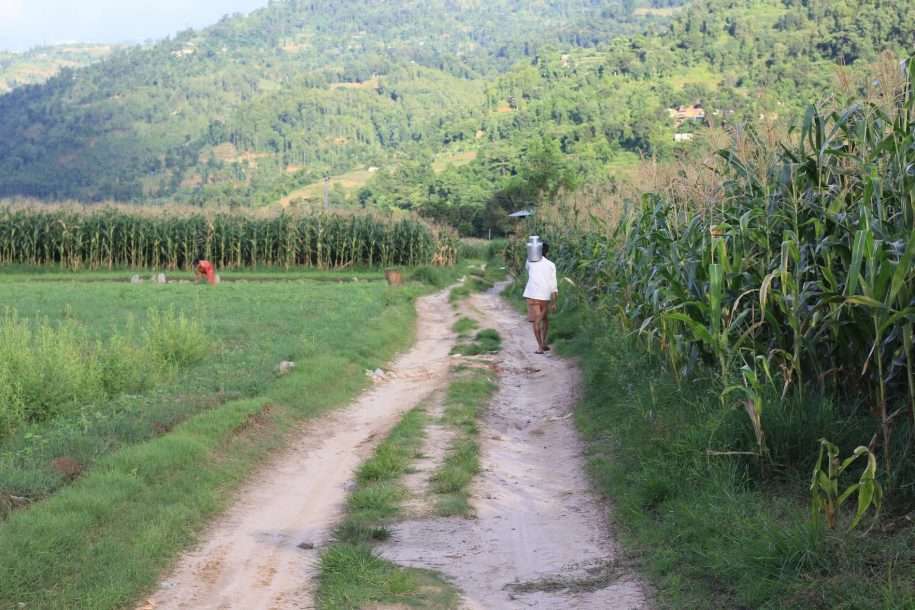We can cite various possibilities, like asking farmers how much money they would sell their land for, or calculating the annualized value of crop yields, or even measuring how much money is spent on farming equipment. What if though, we can measure the change in all of these things? What if we can measure how people allocate economic resources to affect soil quality? Could an increase in income lead to a corresponding increased investment in fertilizers, or other soil improving technologies? Or maybe a drought demands that lands be left fallow for many months, leading to the renewal of essential minerals. Ultimately these can be boiled down to tracking the quantities of a few key compounds and particles present in the soil, which are both measurable as well as indicative of investment in soil.
So how can we test this soil? Soil testing involves many different scientific methods, all with varying levels of accuracy, efficiency, expense, and reliability. In many economic impact studies, these tests look to examine the correlation between economic indicators and productivity of agricultural land, which is partly determined by soil quality. Some tests involve elaborate equipment that can capture on-the-spot readings, and some necessitate being analyzed in labs located in a different city. Others still, are somewhere in the middle: they allow for relatively valid and feasible measures, and they can be assessed in the field itself.
This meeting of the sciences – the economics of soil quality and the chemistry of soil quality – is where the fun is. We’ve talked about how the nature of soil can speak to various economic indicators. But what about actually carrying out these soil tests? In the study we are conducting on the impact of financial inclusion on agricultural outcomes, we went through an extensive piloting phase that brought to the surface many challenges while engaging with soil testing methods of various kinds. While lab tests are expensive – costing up to Rs 1250 per sample – in house soil testing kits that are available online are significantly less costly. These in-house testing kits are portable and easy to use, but deliver results of a poorer quality than the lab tests.
Thus, there are a myriad of issues to be addressed when considering the methodology and implementation of these processes. When choosing a kit, the results have to be corroborated with standardized results from a certified lab, to ensure that the samples give us the results we’re looking for. Additionally, kits that are available for purchase in India will probably yield more promising results because they were designed and calibrated keeping the Indian soil context in mind. Then, to ensure comparability across samples from different respondents, the depth at which soil is extracted should be consistent. Not to mention that even within a relatively restricted geographical boundary, soil quality can vary dramatically.
Perhaps most importantly, the surveyors need to be trained about each of these aspects, and then need to master the instructions prescribed by the soil testing kit. While we might not need a Chemistry degree to use the soil kits, it certainly requires us to have paid attention in what few Chemistry courses we were in.
This taught us a great deal. For instance, we use color-coded scales to determine acidity in the soil (pH). First, this involves mixing the reagents with precision and patience, and then holding the color comparison charts up against the light, and then agreeing upon which color the sample can be matched with. Supposing we take certain readings, only to discover 3 months later that the sample needs to be re-taken, 3 months is enough of a time period for the soil chemistry to change, which could lead to an undesirable bias in the data. The list goes on; there are obviously advantages as well as disadvantages to approaching such a complex and delicate aspect of our study. The costs are steep, involving a lot of financial and non-financial efforts, but many argue that the benefits are definitely worth it.
In the end, we are capitalizing on the nature of accessible and relatively practical scientific methods to measure less concrete concepts, like economic prosperity and resource valuation. If soil quality can stand testament to things like investment in technology, changing practices, or changing input mix, then that’s a big step in the direction of using objective measures in the realm of development economics. Thinking about development and poverty requires not just a theoretical model of change or a proposed intervention plan, but also such initiatives that aim to bring together various disciplines and sciences.





